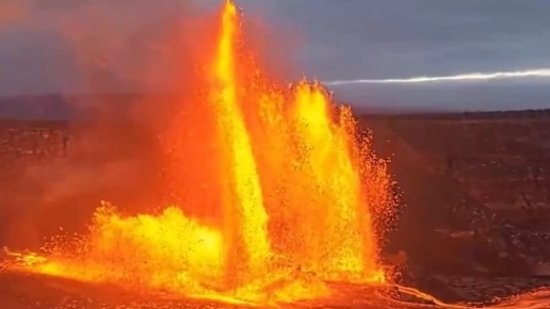
In a dramatic spectacle, Hawaii’s Kilauea volcano erupted once again on Sunday, hurling a fountain of lava over 1,000 feet into the sky from its Halemaumau crater, raising alarms over public health and safety.
Located within the Hawai’i Volcanoes National Park on the Big Island, roughly 200 miles southeast of Honolulu, Kilauea is one of the world’s most active volcanoes. Its current eruption marks the 23rd since December 23, according to the U.S. Geological Survey (USGS).
The latest outburst began on May 25 and lasted approximately six hours, with activity recorded at two vents inside the Halemaumau crater. The north vent ceased at 9:48 p.m. local time, followed by the south vent at 10:25 p.m., USGS reported.
Health Concerns Mount
While the volcanic display captivated onlookers, officials swiftly issued warnings about the potential health risks stemming from the eruption. Volcanic gases—including sulfur dioxide, carbon dioxide, and water vapor—pose a serious threat, particularly to individuals downwind of the vents.
These gases contribute to the formation of vog (volcanic smog), a visible haze that can cause respiratory distress and other health issues when concentrations are high.
Another concern is the presence of “Pele’s hair”—fine threads of volcanic glass that are ejected during eruptions. These strands can clump together, resembling tumbleweeds, and fall within a few hundred yards of the eruption site. Carried by strong winds, these particles can irritate the skin and eyes, prompting officials to urge both residents and tourists to limit exposure.
Tourist Advisory Issued
The Hawai’i Volcanoes National Park, home to both Kilauea and Mauna Loa—the world’s largest active volcano—is a major tourist destination. Park authorities have advised visitors to remain cautious and stay informed through official alerts.
“People with respiratory sensitivities, children, and the elderly are especially vulnerable,” warned a USGS spokesperson. “We strongly recommend that those in affected areas monitor air quality and minimize outdoor activities when vog levels are high.”
As Kilauea continues its cycle of eruptions, authorities are closely monitoring the volcano for further activity and potential threats to public health and safety.
Sources By Agencies


